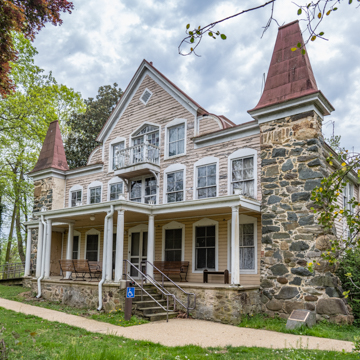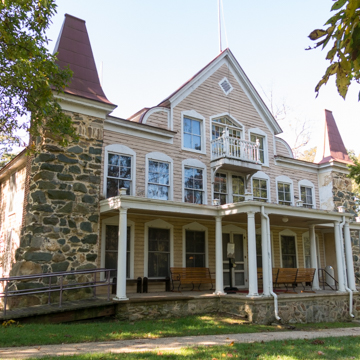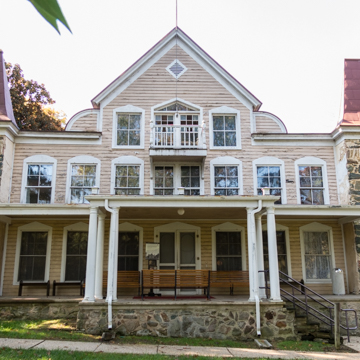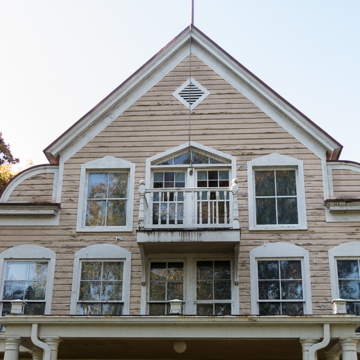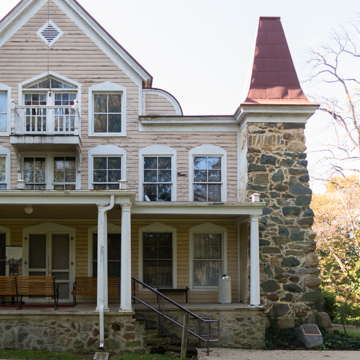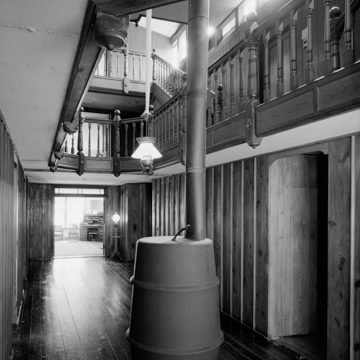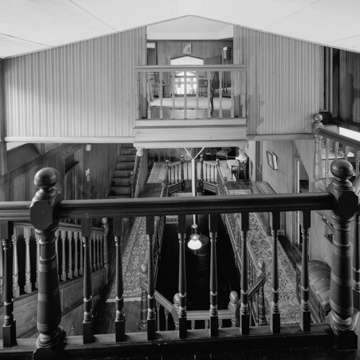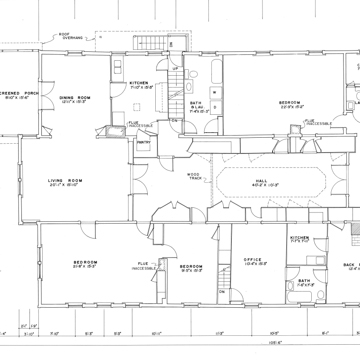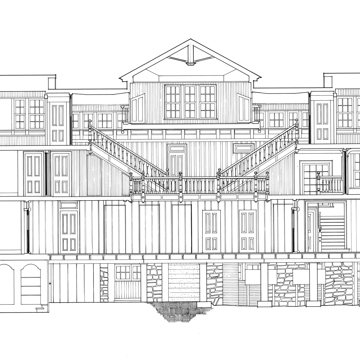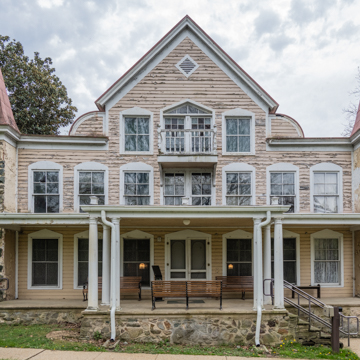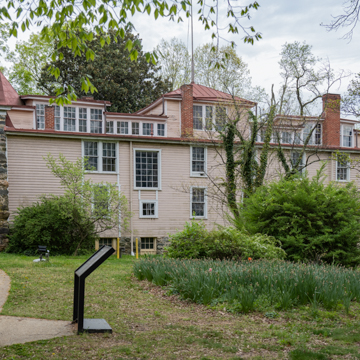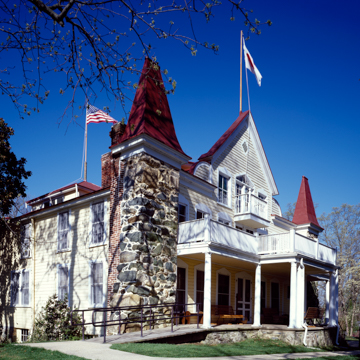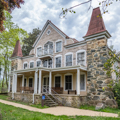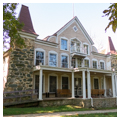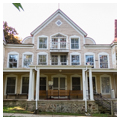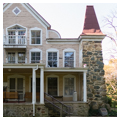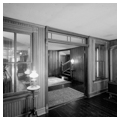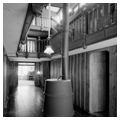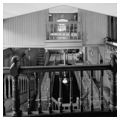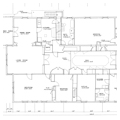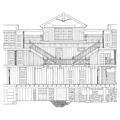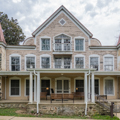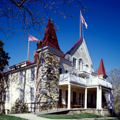This house was erected for the founder of the American Red Cross by Baltzley Brothers within their planned residential community and Glen Echo Chautauqua. Hoping to attract a wealthy and cultured clientele, they believed an association with Clara Barton and the Red Cross would lend credibility to their endeavor. Under Barton’s direction, amateur architect, Red Cross physician, and close confident Julian B. Hubbell laid out an adaptable multipurpose space. It was used primarily as a warehouse for Red Cross supplies until 1897, when Barton took up permanent residence, relocating the organization’s headquarters. As a multifunctional building, the house is an unusual design that encompassed an open two-and-a-half-story central gallery and rooms divided by flexible, frame partition walls. Ornamented with medieval castle-like stone towers to blend with the Chautauqua buildings, the massive rectangular edifice was constructed from wood salvaged from the buildings that sheltered victims of the 1889 Johnston Flood.
A lifelong proponent of female equality, Barton was among the first women to be appointed to a civil service position, as a clerk in the Patent Office. She distinguished herself during the Civil War, organizing medical and nutritional units to relieve those suffering on the battlefield. This work led her to establish the American Red Cross in 1881 and eventually to extend relief during wartime to include civilians, and those suffering from other disasters. Clara Barton resigned in 1904 at the age of eighty-two and resided here until her death in 1912. At that time, the house passed to Hubbell and was later inherited by his nieces, who converted it into apartments. Through the efforts of the Friends of Clara Barton, the house was designated a National Historic Landmark in 1965. It has operated as a National Park Service house museum since 1974.
References
“Clara Barton House,” Montgomery County, Maryland. Historic American Buildings Survey, National Park Service, U.S. Department of the Interior, 2003. From Prints and Photographs Division, Library of Congress (HABS No. MD-300).
Goeldner, Paul. “Clara Barton House,” Montgomery County, Maryland. National Register of Historic Places Inventory-Nomination Form, 1979. National Park Service, U.S. Department of the Interior, Washington, D.C.
Pryor, Elizabeth Brown. Clara Barton, Professional Angel. Philadelphia: University of Pennsylvania Press, 1987.


